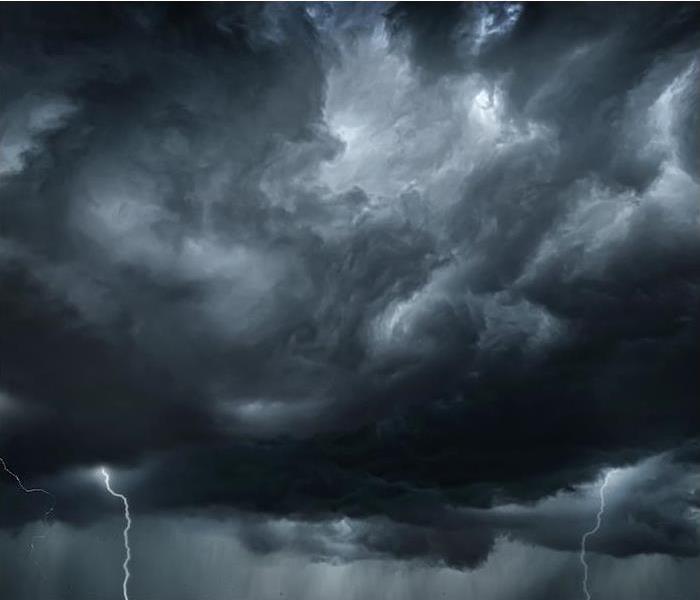What to Do When a Storm Moves In
5/5/2022 (Permalink)
 SERVPRO of Cape Girardeau & Scott Counties is your 24/7 storm damage expert. Call us right away if you need immediate service.
SERVPRO of Cape Girardeau & Scott Counties is your 24/7 storm damage expert. Call us right away if you need immediate service.
Weather can be a scary thing when it turns extreme. There are an average of 100,000 thunderstorms in the United States annually. This frequent weather event can come with lightning, hail, heavy rain and strong winds that leave behind damage and other personal dangers.
Our weather brings a wide variety of temperatures, from cold winters to hot summers. We have experienced tornadoes, flooding from heavy rainfall and, of course, thunderstorms. Spring brings the highest percentage of storms as our temperatures fluctuate widely, but there is never a time of the year that we are exempt from severe weather.
This threat serves as a reminder to us to stay prepared with an emergency weather plan. From communication strategies to emergency kits, having a plan in place can ensure your safety and minimize the risk of damage to your property.
When bad weather strikes, it is key to be able to communicate with your entire household, as well as authorities. It is essential to understand the difference between a watch and warning so that you know when to stay and when to go.
You should have more than one way to receive alerts from weather officials. Your cell phone and a weather radio from the NOAA should be charged and ready for use before a storm begins.
A communication strategy for everyone in your home should be the key piece of your weather plan. Each person should know where the designated safe space is in your home, typically a basement or bathroom. A system for those family members that may not be home should also be part of your emergency plan, so that all can check in with one another. The key goal is always knowing that everyone is safe and accounted for.
An emergency kit is something you can prepare ahead of time and update throughout the year. It should contain enough water and food for each member of your household to sustain them through 72 hours of sheltering in place.
First-aid supplies, flashlights, batteries and any comfort items that can aid in the calming of your family should also be in the kit.
After the storm moves on, you need to know what to do next in order to act quickly for both the safety of your family and to minimize any damages. Once it is safe to do so, you should check around your home for any damages, paying special attention to your windows, doors and roof. These areas are highly likely to allow water in, and you will want to mitigate any potential moisture leakage.
If your home has been damaged, make us your first call. Our trusted professionals at SERVPRO of Cape Girardeau and Scott Counties want to offer you peace of mind by starting your restorations quickly and getting you back to normal.
When you are able to gather your family, review your emergency plan and make any needed changes. Did your kit have enough in it? How did your communication system work? What more can you do to make everyone feel safe and calm for next time? Let your emergency plan be something you constantly revisit so you are always ready.
If you discover storm damage to your home or business, you can count on SERVPRO to handle the restoration. We’re here 24⁄7 to spring into action—get in touch with us today.





 24/7 Emergency Service
24/7 Emergency Service